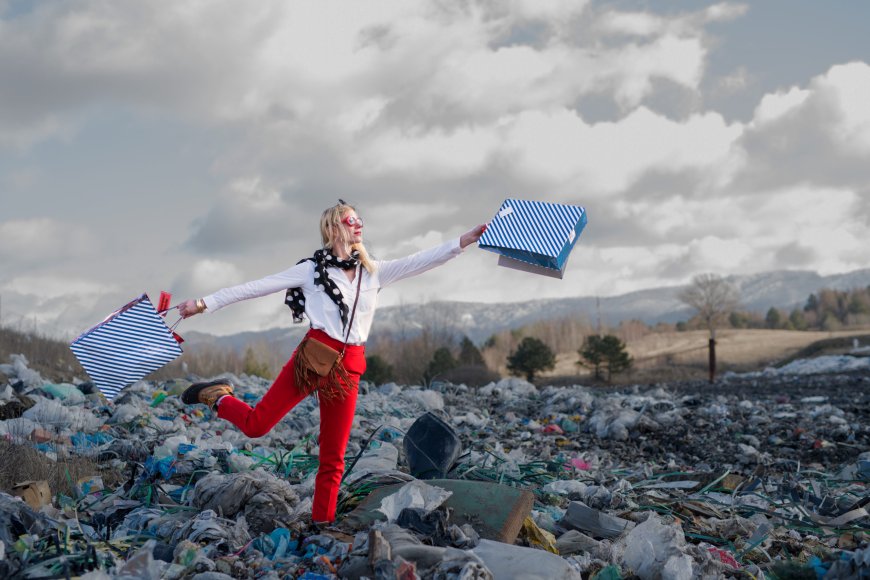The Hidden Price of Fast Fashion: How to Build a Conscious Wardrobe That Lasts
Fast fashion is cheap but comes at a hidden cost to the environment and workers. Learn how to build a stylish, sustainable wardrobe without breaking the bank.

Fast Fashion: A Trend That’s Costing More Than You Think
In today's world, it’s easier than ever to buy trendy clothes at unbelievably low prices. Fast fashion brands release new collections every week, enticing consumers to shop more frequently. But behind the allure of cheap, stylish clothing lies a hidden cost—one that impacts the environment, garment workers, and even our own wallets in the long run.
The question is: Is fast fashion really worth it? And more importantly, how can we build a wardrobe that’s both stylish and sustainable?
Let's dive into the true cost of fast fashion and explore how to create a conscious wardrobe that makes a difference.
The Environmental Cost: Fast Fashion’s Devastating Impact
The fashion industry is the second-largest polluter in the world—right after oil. Here’s why:
? Excessive Water Usage
Did you know it takes 2,700 liters of water to produce one cotton T-shirt? That’s enough drinking water for one person for 2.5 years!
? Toxic Waste & Carbon Emissions
Fast fashion brands rely on cheap synthetic materials like polyester, which are derived from fossil fuels. These fabrics take hundreds of years to decompose, and washing them releases microplastics into our oceans.
Additionally, the industry contributes to 10% of global carbon emissions—more than all international flights and shipping combined.
? Clothing Waste Crisis
Since fast fashion encourages disposable shopping habits, clothes are often discarded after just a few wears. Shockingly, 85% of all textiles end up in landfills each year—many of which could have been recycled or repurposed.
The Human Cost: Who Really Pays for Cheap Clothing?
Fast fashion brands keep prices low by outsourcing production to countries with cheap labor. But this comes at a huge ethical cost:
?? Garment Workers Are Underpaid & Overworked
Many fast fashion workers—mostly women and even children—earn as little as $3 per day and work in unsafe conditions. The 2013 Rana Plaza factory collapse in Bangladesh, which killed over 1,100 workers, exposed the industry’s dangerous practices.
? Exposure to Harmful Chemicals
Toxic dyes and pesticides used in fast fashion don’t just pollute rivers—they also harm the people who work with them, causing respiratory diseases, skin conditions, and even cancer.
How to Build a Conscious Wardrobe (Without Sacrificing Style!)
Sustainable fashion doesn’t mean giving up style or spending a fortune. Here’s how to create a conscious, long-lasting wardrobe that aligns with your values:
✅ 1. Buy Less, Choose Better
Instead of impulse shopping, invest in high-quality, timeless pieces that will last for years. A minimalist wardrobe with versatile items is more stylish and sustainable than an overflowing closet of cheap clothes.
♻️ 2. Shop Secondhand or Vintage
Platforms like ThredUp, Depop, and Poshmark make it easy to find stylish, pre-loved fashion at a fraction of the price. Thrift stores and vintage boutiques are also great places to discover unique pieces while reducing waste.
?️ 3. Support Ethical & Sustainable Brands
Choose brands that prioritize fair wages, eco-friendly materials, and ethical production. Some great options include:
- Patagonia (Eco-conscious outdoor wear)
- Reformation (Sustainable women’s fashion)
- People Tree (Fair-trade clothing)
? Want to find more ethical fashion brands? Check out Good On You, a platform that rates brands based on sustainability and ethics.
? 4. Embrace Slow Fashion & Capsule Wardrobes
Slow fashion focuses on quality over quantity. A capsule wardrobe—a curated selection of timeless pieces—ensures you always have something stylish to wear without the excess.
? 5. Repair, Repurpose & Recycle
Instead of tossing damaged clothing, try repairing or upcycling them. Simple fixes like sewing a button or patching up a hole can extend an item’s lifespan significantly. If you must part with clothing, donate or recycle it rather than sending it to a landfill.
The Bottom Line: Every Purchase is a Vote for the Future
The true cost of fast fashion is far greater than the price tag suggests—it affects our planet, people, and long-term financial well-being.
By making mindful choices and embracing sustainable fashion, we can reduce waste, support ethical practices, and still look incredible.
? Ready to make a change? Start by evaluating your wardrobe and making small, intentional shifts. Every step towards sustainability counts!
What's Your Reaction?
 Like
0
Like
0
 Dislike
0
Dislike
0
 Love
0
Love
0
 Funny
0
Funny
0
 Angry
0
Angry
0
 Sad
0
Sad
0
 Wow
0
Wow
0



















































